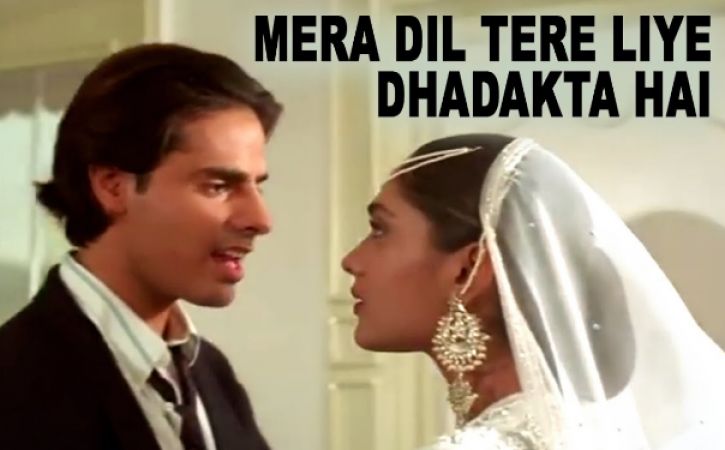
Music transcends national boundaries and cultural differences, frequently acting as a link between various regions of the world. The song "Mera Dil Tere Liye" from the 1990 Bollywood film "Aashiqui" is a striking illustration of this transcultural phenomenon. Even though "You're the Voice," a popular song by Australian singer John Farnham, is a part of the musical heritage of Indian cinema, the song is eerily similar to it. In this article, we delve into the fascinating process by which "Mera Dil Tere Liye" was influenced by and reworked from "You're the Voice," examining the cultural overlaps and musical quirks that contribute to the story's allure.
Let's first examine "You're the Voice" by John Farnham's history before moving on to the Bollywood adaptation. This well-known song was first made available in 1986 as a track on Farnham's album "Whispering Jack." Andy Qunta, Keith Reid, Maggie Ryder, and Chris Thompson all contributed to the song's composition. "You're the Voice" quickly gained popularity after debuting at the top of the Australian charts and enjoying significant success abroad. Farnham's soulful voice, the song's resonant melody, and its potent lyrics made it an anthem for empowerment and self-expression.
Four years after the release of "You're the Voice," "Mera Dil Tere Liye" was included on the soundtrack for the Indian romantic drama "Aashiqui." This song, which was written by Sameer Anjaan and composed by Nadeem-Shravan, perfectly encapsulated the emotions of love and longing. What makes it particularly intriguing, though, is how subtly it was changed so that it now sounds like an Indian melody while still retaining the essence of the original feelings.
Cultural Translation: Translating "You're the Voice" into "Mera Dil Tere Liye" required first adapting it to the Bollywood context. In order to appeal to the Indian audience, the lyrics were rewritten in Hindi. The Indian rendition of the song placed more emphasis on love and devotion than the original, which was a call for personal expression and change.
Melodic Transformation: The composition was modified to include components from traditional Indian music in order to infuse the essence of Indian music. "Mera Dil Tere Liye" has a distinctive sound because Indian instruments like the flute and sitar were used. The subtle incorporation of the traditional Indian Raaga system into the melody deepened the song's emotional impact.
Vocal Interpretation: Kumar Sanu, a playback singer renowned for his soulful renditions, took the place of John Farnham's commanding voice. The song was given life by Sanu's moving vocals, which quickly cemented its status as a favorite among fans of Bollywood music.
Not only did "Mera Dil Tere Liye" stand out among the other Bollywood songs, but it also became the anthem for a whole generation. Millions of people were affected by its moving lyrics and melodic quality. When it came to launching the careers of Kumar Sanu and Anuradha Paudwal, who provided the voices for the lead actors in the film, both the song and the movie "Aashiqui" itself were crucial.
The popularity of "Mera Dil Tere Liye" also established a precedent for future Bollywood music directors to take cues from foreign hits while incorporating their own distinctive style. A wide range of musical influences are produced as a result of this practice, which is still prevalent in the sector.
The "Mera Dil Tere Liye" story, which drew inspiration from "You're the Voice," is a prime example of how music can communicate with people from all walks of life. These songs originated in various parts of the world, but they had a lot in common with one another in terms of the feelings they expressed. Bollywood is not the only place where there is a cultural exchange through music; this phenomenon is seen all over the world, where artists draw inspiration from and reinterpret one another's work.
The song "Mera Dil Tere Liye" is a stunning illustration of how music can be enjoyed everywhere and break down geographical barriers. A self-expression anthem from Australia was changed into a ballad of love and devotion from India. This cultural appropriation demonstrates the versatility and creativity of musicians who can draw inspiration from one source and transform it into something completely new and culturally relevant. At the end of the day, what matters most is how a song connects with listeners all over the world, not just where it came from.
Indra Kumar's Departure from the Madhuri Dixit Era
Aamir Khan and Juhi Chawla's Heartwarming Reunion
The Silver Screen Salutes the Olive Greens and the Blue Skies in 'Border'